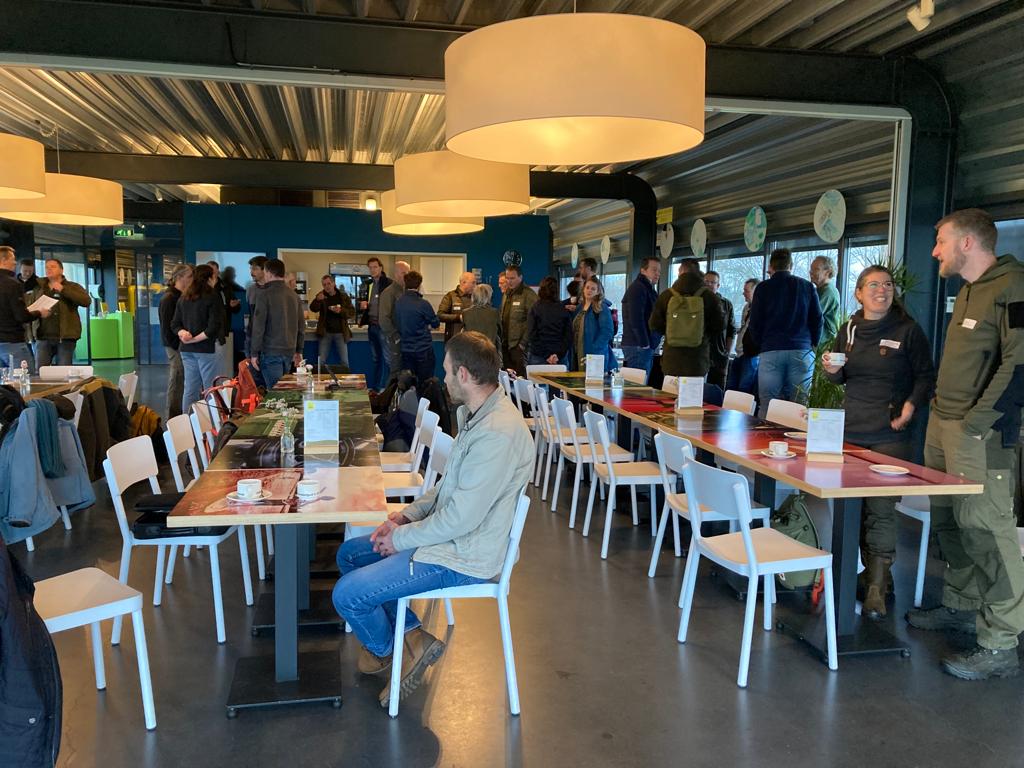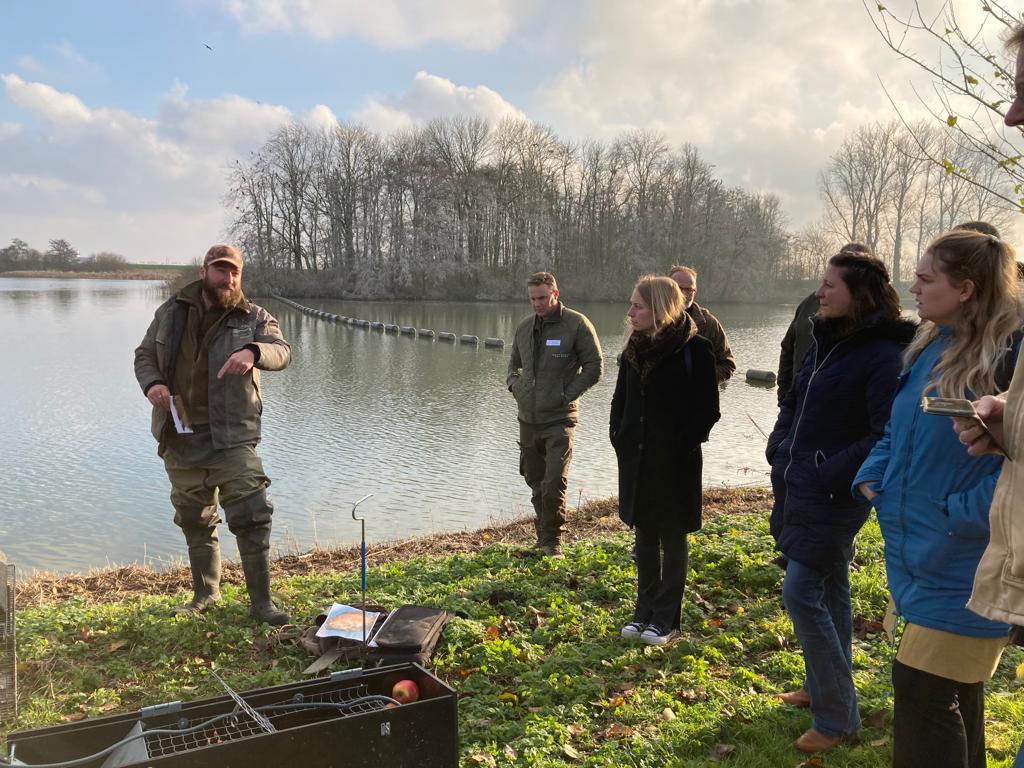After the successful Open Day on September 16 in Gendt, LifeMICA organized another Open Day in Lemmer. On 12 December, the attendees were updated on the latest status of the sub-projects. Everyone could also with their own eyes see what 2 of innovations look like ‘in real life’.

The program started with eDNA. Timo Breit of the University of Amsterdam was positive about this technique of using eDNA to demonstrate the presence of muskrats and coypu in the water. “The muskrat trappers spend 70 percent of their time searching along the banks”, he said. “By taking water samples and thus determining whether there are muskrats or coypu in a place, the work becomes more efficient. And less heavy for the trappers.” According to Breit, other advantages are that with eDNA you have a more objective picture of the presence of muskrats with eDNA, and that complete removal is achievable.
Muskrat families
Dolf Moerkens of the Unie van Waterschappen talked about DNA Mapping. In this subproject, an answer was sought to the question of whether muskrats trapped in Friesland originate from other areas, or whether they are there due to an increase in the local population. It turns out that there are familial relationships between muskrats in different regions. Most muskrats trapped in Friesland come from surrounding areas with relatively larger populations.
Faster software
Pascal van der Linden of waterschap Rivierenland told about the smart life-trapping cage. 25 have now been deployed at the test locations. 3 coypu and 9 muskrats were trapped with it. According to Van der Linden, the biggest challenge in this project is to enrich the Artificial Intelligence: “The software must learn to recognize muskrats and coypu. There is even a smart life trap in a zoo now for that purpose!” The traps have also improved in the meantime: the batteries last longer, the magnet is better, the housing of the trap is reinforced, the GPS is stronger and the software has become faster. This last topic was especially necessary, because the muskrat sometimes walked out of the trap before it closed.
Empty pictures
Finally, Emma Cartuyvels of the Flemish Institute for Nature and Forest Research talked about the smart camera traps. They are mainly used in areas where there are (almost) no muskrats left: you can quickly see if there is influx from new animals. The problem is that many ’empty photos’ are taken, and that half of the remaining photos show a duck. That is why the image recognition platform Agouti is used. This allows you to assess images more quickly and you no longer has to be done manually.

Demonstrations
In the afternoon, Mirjam Boonstra of the University of Amsterdam showed how samples for eDNA monitoring are collected with a ‘sailing drone’. Muskrat trapper Kees Schep demonstrated the life-trapping cage. Special observation: even if you keep a picture of a muskrat in the trap, it will close…
End of project
The Life MICA project will end in September 2023. According to project leader Hans Giskes, the next year will be exciting. “Next year we will deliver the final report, in which we account for what we have done and what the results are. And of course we will determine how we continue after Life.”

